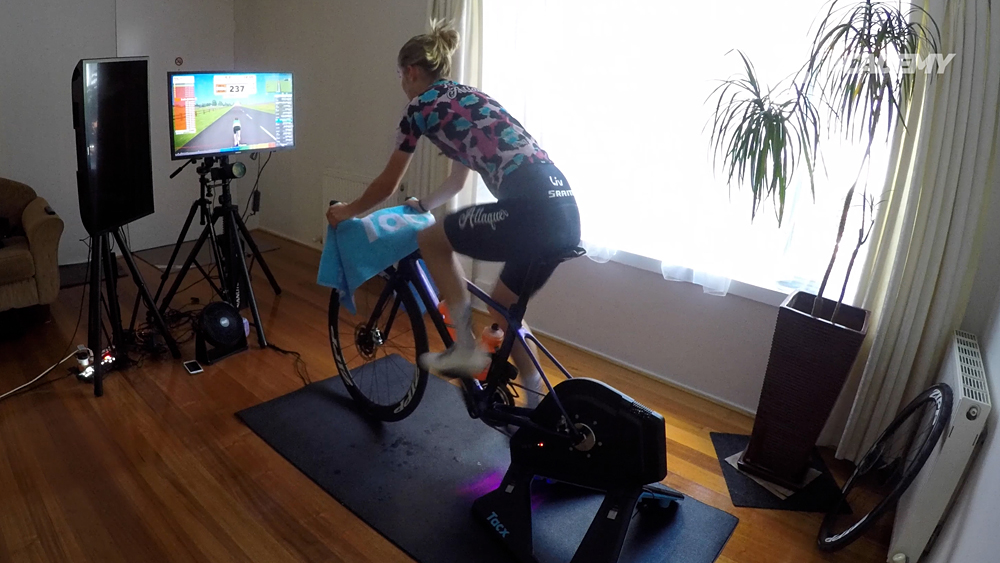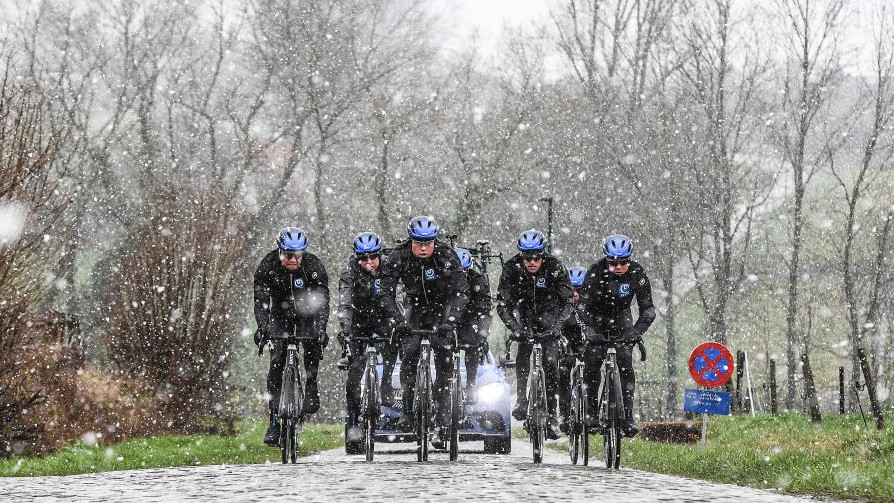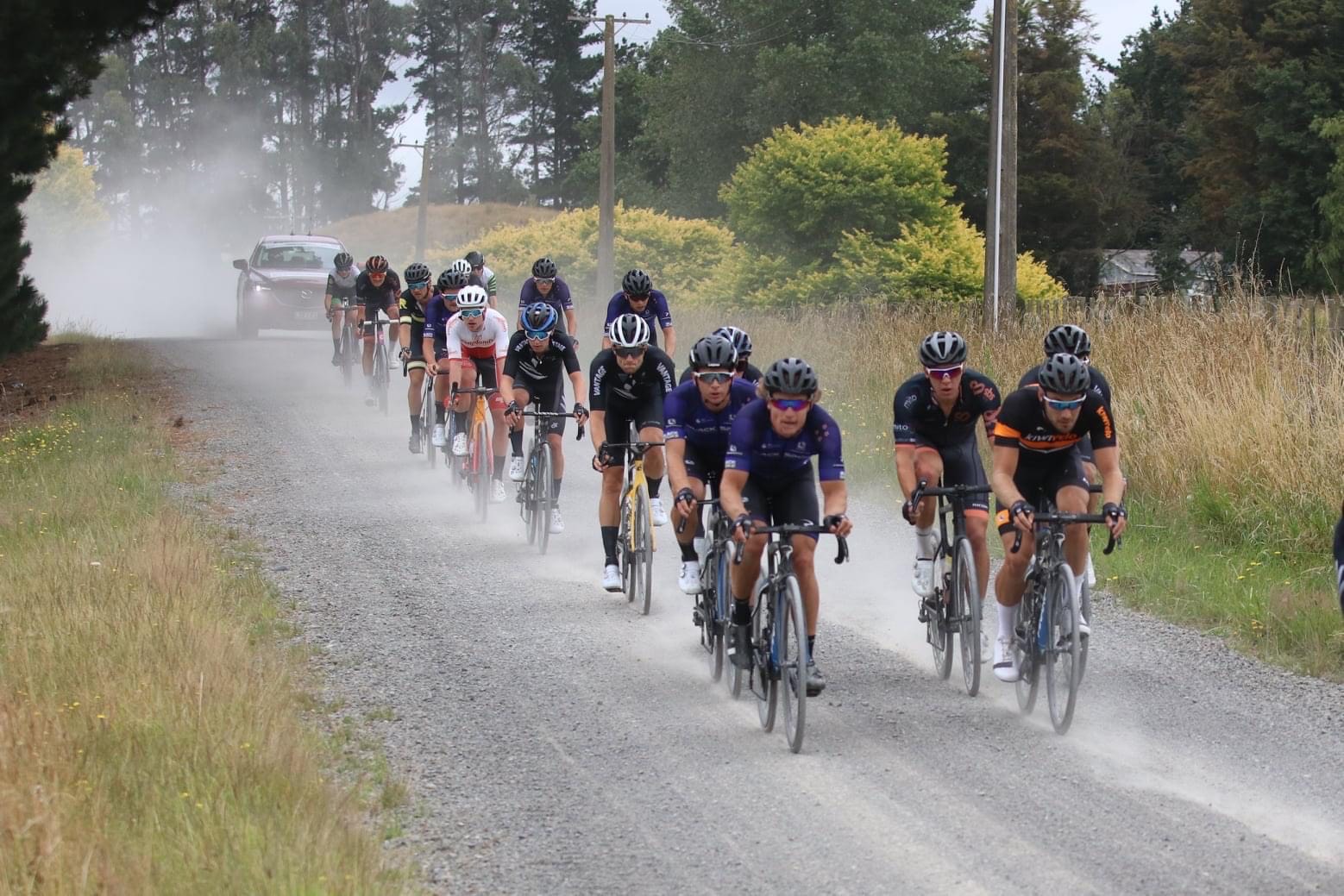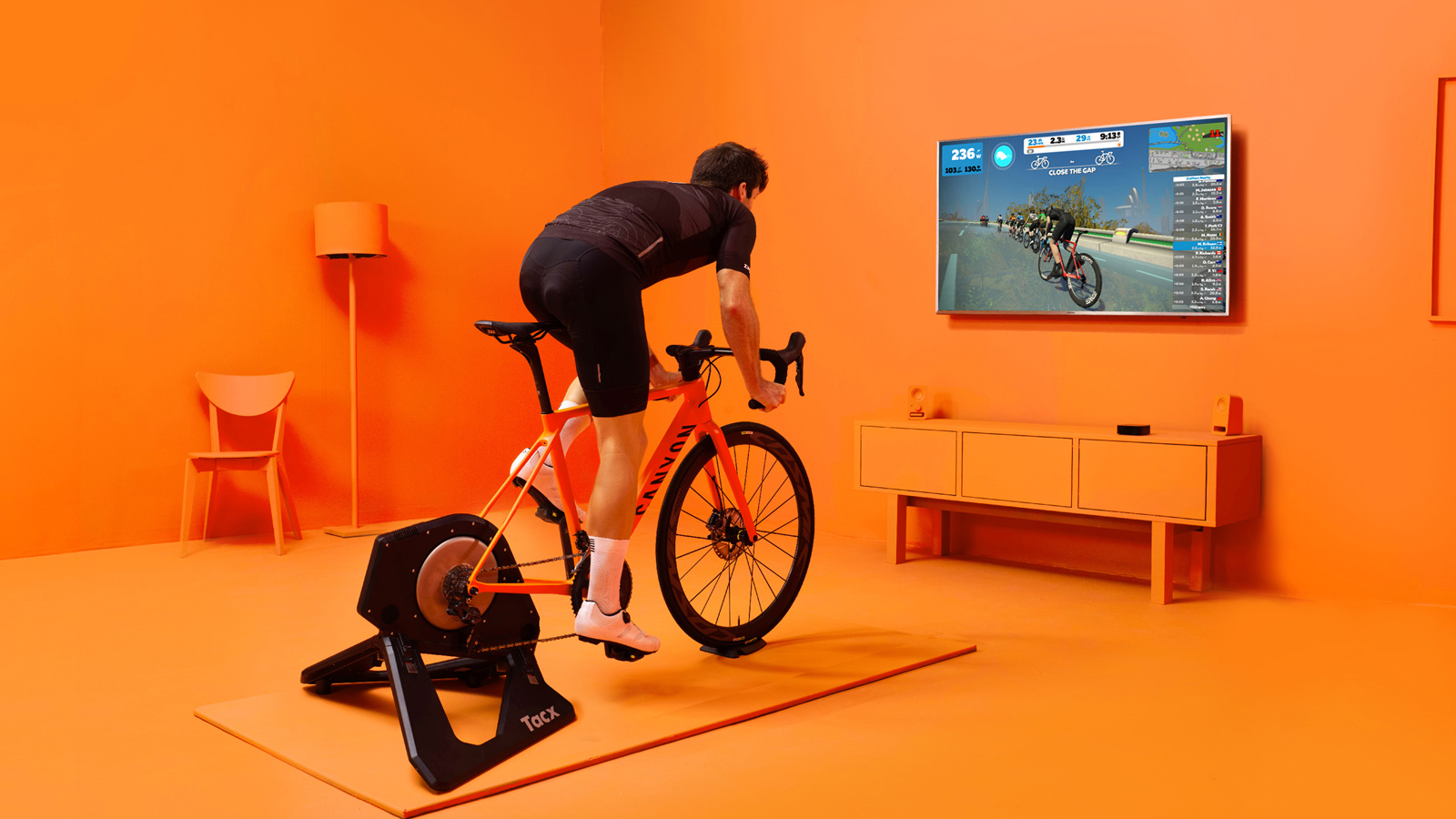Can you train indoors for a gravel race?
How to translate indoor fitness to gravel racing success

Gravel is without a doubt the biggest bike trend of the past decade. We’ve seen fiery debates, UCI involvement, and hundreds of thousands of dollars in prize money being thrown around in the last year alone. The trend shows no signs of slowing down as gravel saturates the market as an all-inclusive way to race and ride, for cyclists of all ages and abilities.
One of the beauties of gravel racing is that it doesn’t have to be a race. Thousands of riders show up on their best gravel bikes just to finish the damn thing, even if that means finishing in the dark after 14 hours on the bike.
Some riders do love to race gravel, and there has been a well-publicised debate regarding the unwritten rules of gravel racing – is it a team sport with road team tactics (leadout trains, protected riders, and intra-team wheel swaps)? Or is gravel racing an individual sport, designed for privateers who carry everything they need on their backs?
We won’t be diving into that debate in this article, but we will be covering another gravel-related question that is popping up more and more: can you train indoors for a gravel race?

Why would you train indoors for a gravel race?
It seems counterintuitive: indoor cycling for an outdoor race that will include lots of bumpy gravel and technical corners - surely you will lose the edge and suffer from being completely out of your element?
But there are a number of reasons that you would train indoors for a gravel race.
Cold weather – Many of us don’t have the luxury of living in southern California, or anywhere else where the sun is shining and it is easy to ride outside year-round. Many of us have been stuck in the pain cave for our winter cycling endeavours. We sip our coffee in the morning and stare at the rain-filled clouds that cast a veil of dreariness over yet another day.
The latest race content, interviews, features, reviews and expert buying guides, direct to your inbox!
Some of us come from even colder climates, where riding outside is legitimately dangerous. Of course, if you have a fat bike or mountain bike, four layers of winter clothing, and lobster-claw gloves, you can still ride outside when it’s -20C/-4F. But for most of us, this is completely impractical; and besides, the best turbo trainers are much easier, cheaper, warmer, and safer than all that extra gear.
Lockdowns – A new item on the list of 'reasons to not ride outside’ is lockdowns and pandemic-related restrictions. Depending on where you are in the world, training outdoors may involve risks you'd rather avoid. You might not even be allowed to leave your house, or travel a certain distance from it.
Amid the anxiety comes the difficulty – or impossibility – to train outdoors. Once again, indoor riding is easier and safer than outdoor riding in the middle of a global pandemic.
Structured workouts – There is no better place for a structured workout than an indoor trainer. Have you ever wondered why professional cyclists do most of their interval training on climbs? It’s not because they’re all pure climbers, it is because climbs provide added resistance for a steady and uninterrupted effort with little distraction. During the toughest interval sessions, you don’t want to be worrying about cars, traffic signals, pedestrian crossings, downhills, or corners. Long climbs are great for these kinds of efforts, but most of us don’t have a steady 30-minute climb within riding distance of our house. And that’s why so many riders turn to the indoor trainer for their interval sessions.
Indoor trainers provide a completely controlled and distraction-free setting for tough indoor training, where all you have to do is switch on ERG mode, choose a workout, and keep the pedals turning.
Perhaps I’m stating the obvious here, but indoor fitness doesn’t exactly translate to outdoor success in cycling. There are plenty of seasoned Zwifters who struggle for the tactical and positional complexity of real-life pelotons, and there are plenty of Tour de France riders that would get dropped in a weekday Zwift race. The difference between indoor cycling and outdoor cycling is stark, but there are a number of things that you can do to close the performance gap and get the most out of your indoor fitness for a gravel race.
It all starts with knowing the demands of a gravel race.

Demands of a gravel race
The only thing that matters on the indoor trainer is your power output. When you get into racing, timing and positioning are minimally important; but still, the biggest differentiator between first and last is their respective power outputs.
Gravel racing is a completely different beast. Not only do you have to pedal hard, but you also need to be a skilled bike handler, a confident climber, a savvy pack racer, and an experienced eater. Let’s break those down:
Bike handling – Part of the reason that gravel racing is so challenging is that not only do you need to be a skilled bike handler, but you also need a set of skills that matches a wide variety of dynamic terrain. No two gravel races are the same, and seasoned gravel racers will tell you that tyre choice and tyre pressure are two of the most important decisions you’ll make on race day. Why? Because gravel racing takes place on all sorts of surfaces from hard-packed dirt to chunky Flint Hills gravel.
In order to succeed in gravel racing, you need to be able to handle your bike on dirt, mud, grass, single-track, gravel, and rocks from the size of tiny pebbles to the size of small boulders. The bumpiest and most technical sections often split the field in a gravel race, and if you miss the boat because of your poor bike handling skills, you’ll never see the front of the field again.
Climbing – it is impossible to simulate gravel climbing on the indoor trainer, even with a Wahoo Kickr Climb or a Wahoo Kickr Bike. Sure, you can simulate the ups and downs of climbing on Zwift, but you cannot simulate the reality of gravel climbing on the indoor trainer.
Gravel climbing is very different from road climbing in both physics and overall feeling. The former is much slower and more slippery, while the latter is much faster and smoother. On a gravel climb, you will feel your rear wheel slipping out from under you, your soft tyres bouncing up and down, and your heavy bike being thrown from side to side. These are the feelings that you cannot simulate, and you’re likely to find that gravel climbing is much more physically demanding than indoor climbing.
You will use more muscles to climb on gravel than when climbing on the indoor trainer. These are your arm muscles, your back muscles, and your stabiliser muscles that will keep you moving forward on a 10-per cent gravel grade – whereas, on the indoor trainer, all you need to do is push up and down with your legs, and that’s what it takes to be a climber.
Pack racing – As the gravel scene continues to grow, we are seeing races with >1,000 racers on the start line. And as experienced gravel racers know, the first gravel sector is often a major pinch point that splits the field with crashes, mechanicals, and riders going (figuratively) backwards. In order to make it to the front of a gravel race, you need to be comfortable bumping elbows, passing riders in corners and on straights, and losing your line of sight as you sit 50th wheel in a pack of 200.
Indoor training won’t prepare you for any of this, so for now, you’ll have to find an IRL race or group ride to practice your pack riding skills
Fuelling – One of the most underrated determinants of gravel racing performance is the ability to fuel on the bike. Gravel races are often many hours in length, sometimes up to 8, 10, or even 12 hours. Not only will you have to train your ability to ride for that long, but you will also have to train your body to take on enough fuel in the form of foods and drinks.
‘Training the gut’ is a bit of a buzzword, but it’s true – it is more often that your fueling fails you rather than your heart, lungs, or legs. During long gravel races, you are just as likely to bonk (or run out of carbohydrate fuel sources) than you are to get dropped.
In order to succeed in gravel racing, you need to train your gut, or your ability to take on a certain amount of nutrition and hydration (e.g. eating 200 calories and drinking 8 oz. of fluid every 45 minutes) in the midst of a multi-hour gravel race.
Pedal hard – Let's not forget this is a race we're training for, so the more power you can put out, the faster you're likely to go. Or at least, a lower effort for a given power will leave you with more reserves for when attacks happen.
As we've explained in this section, there are plenty of skills required for a gravel race that you can't train indoors, but your fitness and power definitely can be.

How to train indoors for a gravel race
Now let’s put it all together. We know what it takes to be a successful gravel racer, and we know that we have an indoor trainer at our disposal in the lead-up to our goal event. So how do you train indoors for a gravel race?
Choose structured workouts that fit the demand of your gravel race. With a goal event on the calendar, learn as much as you can about the course, the gravel roads, and the climbs if there are any. Tailor your workouts to fit the demands of the race – when training for a long and flat gravel race, focus on increasing your Zone 2 aerobic endurance, and maybe add in some Over/Under-style intervals to simulate riding in the pack (i.e. pulling in the wind / sitting in the group).
If your goal race happens to include five long gravel climbs lasting 10-30 minutes each, focus more on Tempo and Sweetspot intervals on the indoor trainer. For example, a session of 3x20 minutes at Tempo will train your ability to get up and over these climbs at a relatively high power output, and repeat that effort multiple times in a single ride.
Don’t forget to include some very long rides in your indoor training plan if they happen to fit the demands of your goal race. As a rule of thumb, you should be able to complete about two-thirds the length of your goal event in training. If you’re training for a three-hour gravel race, that means being able to complete a two-hour ride in training. But if you’re training for a 10-hour gravel race, you should be able to complete a seven-hour ride in training.
There is a bit of debate around how indoor training time relates to outdoor training time, with many riders and coaches saying that the no-rest nature of indoor training rides count for about more than outdoor rides. Translation: two hours on the trainer is worth about the same as three hours outdoors. While I haven’t dived into the science yet (perhaps I will in a future article), I believe this rule holds true for most people – mentally, as well as physically.
Most coaches would never prescribe a training ride longer than three hours for the indoor trainer, but if you’re training exclusively indoors for a 10-hour gravel race, I would say you should be able to ride four or five hours indoors. However, to get the most out of your training without destroying yourself mentally, try riding three hours on the indoor trainer on back-to-back days, rather than cramming it all into one brutal training session.
Remember to practice your fuelling and hydration during these indoor training sessions, especially during your long rides and interval sessions. As you get closer to your goal event, use the same foods, liquids, and drink mixes that you will on race day in order to train your gut so that you won’t get an upset stomach or bonk on race day.
If possible, get outside for a long ride once per week. This is the time to practice all of the skills that you can’t practice on the indoor trainer. That means finding steep gravel hills and technical gravel roads where you can practice your climbing and bike handling skills. Grab some friends or join a group ride to practice your pack riding skills in a smaller and slower setting - that way, jumping into a group of 1,000 riders on race day will be a lot less overwhelming.
Back pain is one of the biggest limiters to ultra-endurance cycling, and gravel racing is no different. Because gravel is rougher and more technical than pavement, you will likely use more core and stabiliser muscles to stay upright, which can put a lot of strain on your lower back if you’re not used to it. The indoor solution: rollers. While rocker plates can simulate some side-to-side and fore-aft movement, they will not be as beneficial as riding on rollers which better simulate the outdoor riding experience.
Riding rollers is like riding on the road, in that you have to balance and steer to keep your bike upright, and really focus to keep your balance when riding out of the saddle. While rollers aren’t a direct substitute for outdoor gravel riding, they can certainly close the gap and help improve your core and stabiliser muscles while training indoors.
Zach is a freelance writer, the head of ZNehr Coaching, and an elite-level rider in road, track, and e-racing. He writes about everything cycling-related, from buyer's guides to product reviews and feature articles to power analyses. After earning a Bachelor’s Degree in Exercise Science at Marian University-Indianapolis, Zach discovered a passion for writing that soon turned into a full-fledged career. In between articles, Zach spends his time working with endurance athletes of all abilities and ages at ZNehr Coaching. After entering the sport at age 17, Zach went on to have a wonderful road racing career that included winning the 2017 Collegiate National Time Trial Championships and a 9th place finish at the 2019 US Pro National Time Trial Championships. Nowadays, Zach spends most of his ride time indoors with NeXT eSport.
